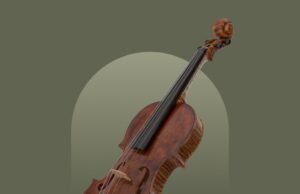John Dilworth
DELEPLANQUE, Gérard J. Worked circa. 1754-1790 Lille France. Maker of many and various bowed and plucked stringed instruments. Violins and cellos of awkward workmanship, high arched but with well-chosen wood and good orange-brown varnish. Finely worked and decorated guitar of 1768 in Musée de la Musique, Paris. Gérard J. Deleplanque / Luthier, rue de la grande / chaussée, coin de celle des / Dominicains à Lille. 1788. Au Violon de Crémone / Gérard J. Deleplanque / Luthier, Place de Ribour, près / l’ Hôtel-de-Ville, à Lille, 1790
Cecie Stainer
A viol maker in Lille, 1760-88. He was at first established at ” Marche aux poulets,” near the ” Marche aux poissons,” but about 1766 transferred his business to the rue de la Grande-Chaussee. He has left some excellent specimens of his work ; a five-stringed viol, dated 1766, with yellow varnish tinged with red, was exhibited in 1878; a very beautiful guitar, dated 1768, is in the Paris Conservatoire Collection; also another magnificent one made of tortoiseshell, inlaid with mother-of-pearl and ivory, dated 1775. Two other guitars are dated 1770 and 1777. The label “Gerard J. Deleplanque, luthier, rue de la Grande-Chaussee coin de celle des Dominicains a Lille, 1788,” was found in a guitar; the same, dated 1772, in a guitar of eleven strings, which was peculiar in having the back of the lute or mandoline shape.
Willibald Leo Lütgendorff
Ein sehr geschickter Lauten- und Geigenmacher. Er wohnte erst Marché
aux poulets, près le Marche aux poissons, seit 1768 in der Grande Chaussée au
coin de celle des Dominicains und gegen 1790 Place de Ribour, près 1’Hôtel de Ville. Er war sorgfältig in der Arbeit und fleissig, so dass seine Werke
ziemlich häufig vorkommen, freilich häufiger Pandoren, Lauten und Zithern,
als Geigen. Verschiedene Instrumente von ihm finden sich in den Sammlungen
der Conservatorien in Paris und Brüssel, sowie bei Snoeck und bei Heuckart.
Das Holz ist meist sehr schön, der Lack röthlichgelb. Er gebrauchte verschiedene
Zettel und führte erst in seinen letzten das Schild »Au violon de
Crémone« an.
